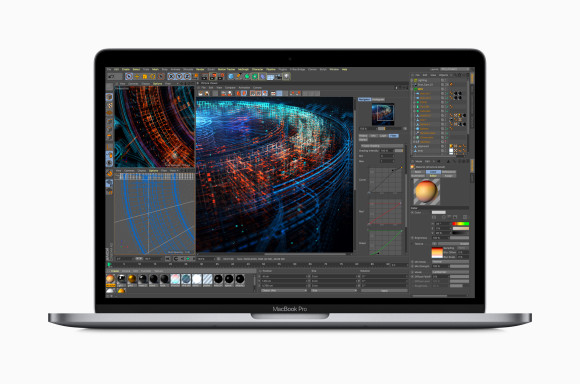
:max_bytes(150000):strip_icc()/Screenshot2018-11-14at14.38.49-5bec354ec9e77c0026260078.png)
- #Macbook pro software update 2018 how to#
- #Macbook pro software update 2018 mac os#
- #Macbook pro software update 2018 install#
- #Macbook pro software update 2018 Patch#
- #Macbook pro software update 2018 download#
The OS X 10.10.1 update for OS X Yosemite also repairs performance issues that some users have noticed when upgrading. Apple Software Updates for iOS 8.1.1 and OS X 10.10.1 Released: OS X 10.10.1 While not mentioned explicitly, other older devices, such as the iPad Mini and 5 th-generation iPod Touch, may also see a performance boost, according to the article titled “ Apple’s iOS 8.1.1 Update Is Pretty Minor-Unless You Have An iPhone 4S Or iPad 2” by Adriana Lee at. These devices include the iPad 2 and the iPhone 4S. One of the most important features of this update is that it also improves the performance of the software on older Apple devices.
#Macbook pro software update 2018 Patch#
The iOS 8.1.1 patch updates a wide range of issues with iOS 8.
#Macbook pro software update 2018 mac os#
Mac OS Ventura-Mojave Keyboard Shortcuts.
#Macbook pro software update 2018 download#

There are certain maintenance scripts that your macOS runs to optimize itself. The best way to avoid this issue entirely is to use only Apple-made or Mac-compatible peripheral devices. When this happens, you know that this device is at fault. Connect one device at a time until your Mac crashes and reboots. Start by removing all external devices, such as keyboards, drives, and mouse and restarting your Mac. You’ll know that this is the case if your computer restarts immediately or a few minutes after connecting the device (or turning your Mac on with the device connected). Kernel panic is commonly caused by accessories or peripheral devices that are incompatible with your Mac. If this fixes your issue, you’ll want to keep this app off your Mac entirely (or at least until it is updated). You’ll need to restart your Mac after doing so. If that doesn’t help, you may want to remove recently downloaded third-party software entirely. In some cases, an update is all you’ll need to solve the problem. Clicking it may help you identify the particular software causing your problem, so you know where to start resolving the issue.Īfter you’ve identified the software responsible, check whether it needs to be updated. When your Mac restarts and the message stating that “Your computer restarted because of a problem” pops up, you may see a “More info…” button. In some cases, the root of your Mac’s kernel panic may be apps that you’ve downloaded. Unfortunately, your data may not survive reinstallation, so make sure you back up all important information before doing this. This is pretty much guaranteed to resolve any issue that may be causing kernel panic. If updating your software or performing minor resets doesn’t stop your Mac from restarting, you may need to reinstall macOS entirely. If an update is available, click Update Now. Click About This Mac and then, Software Update. To check for macOS updates, go to the Apple menu.
#Macbook pro software update 2018 install#
Luckily, this is easy to fix - simply install all available updates your Mac is compatible with. Missed macOS updates and update issues can confuse your Mac, leading it to repeatedly restart (among other issues).
#Macbook pro software update 2018 how to#
Here’s how to fix the possible causes of your Mac restarting: macOS problems Your Mac may also restart because of issues with its operating system. Kernel panic may result from faulty or problematic software, peripheral devices, or hardware settings. You’ll know that this has occurred when your Mac shows you a message that “Your computer restarted because of a problem.” The most common cause of a Mac continually restarting is called “kernel panic.” This occurs when your Mac’s kernel, or operating system, detects an issue that can be fixed by restarting your computer. There are a few reasons why your Mac might repeatedly restart. In this article, we’ll go over ways to identify why your Mac keeps restarting - and, even better, how to fix it. Mac Help Desk Troubleshooting What to do when your Mac keeps restarting?Ī Mac that restarts unexpectedly is frustrating.


 0 kommentar(er)
0 kommentar(er)
